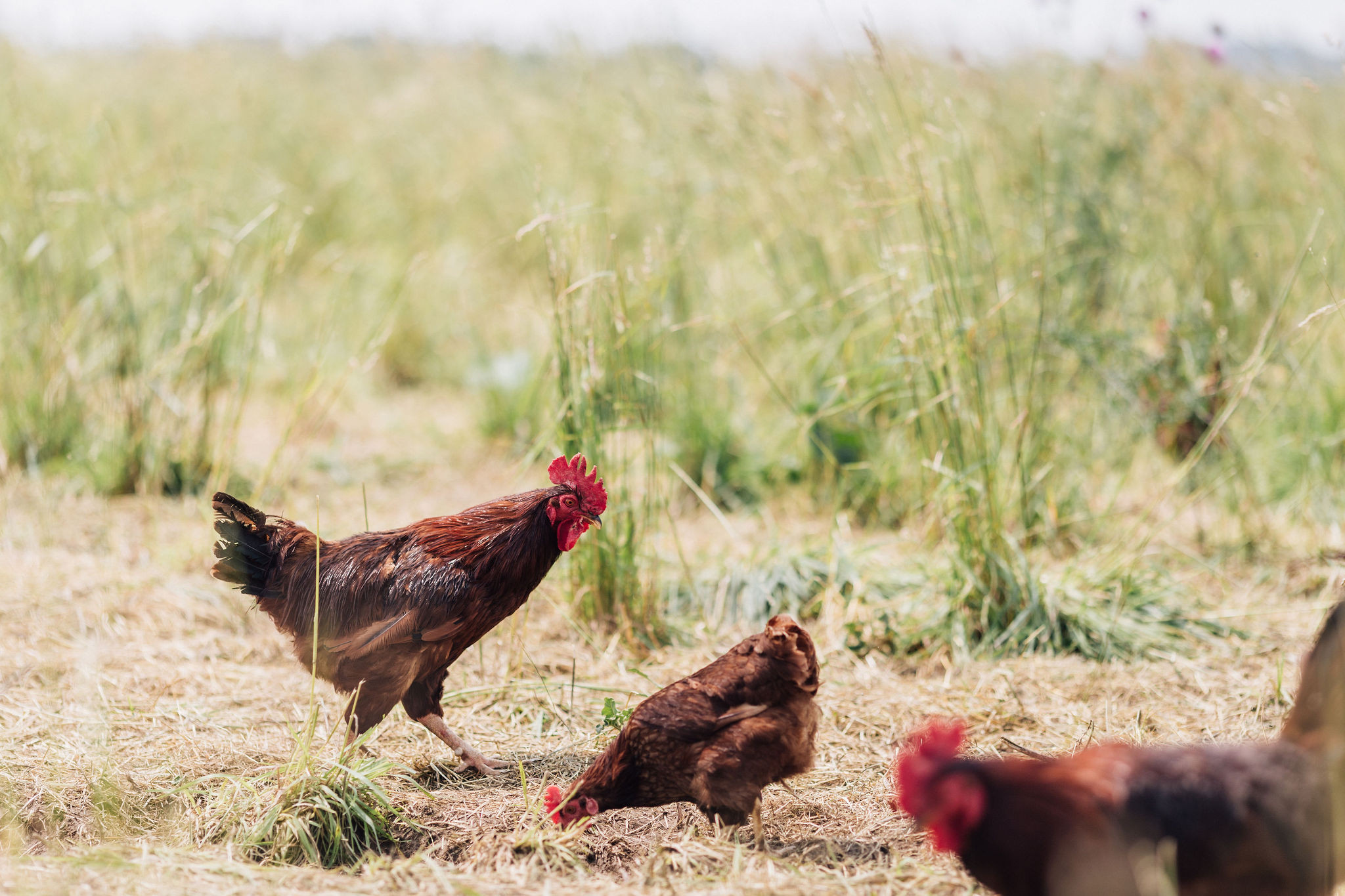Why pigs are happy and healthy in the woods
posted on
September 28, 2017
The pigs are so big! When I visited the farm in March, they were just babies, squirming around and squealing in hay in the barn. Now, they are nearly 400 pounds and living in the woods. It has been so amazing having a deep connection to the food that I prepare for my family. By reading these newsletters, I hope that you feel a bit more connected to your food, too.
Five pigs live on the farm. In the spring, once it was warm enough, the farmer moved them into the woods across the street and up the hill from the barn. They are free to roam on about 1⁄2 acre of wooded land, and they have certainly made it their own.
Pigs love the woods. After all, it’s their natural habitat. The forest has a nice canopy that provides shade for their nearly hairless bodies. They love to use their strong snouts to root up the earth. What used to be a nice ground cover of ferns and bushes in the forest has been turned to lumpy dirt and mud by the pigs. They love foraging for food and have consumed countless acorns and bugs (in addition to lots of skim milk and their regular feed, which is mostly oats but also contains corn, fish and crab meal, pea meal, and organic minerals).
Come mid-October, the pigs will be ready for processing (we have 8 new small pigs that will be ready in March/April). When they go to the butcher, we lose about 30% in dress weight (after the blood and organs are removed). Then, we lose another 20% when cut. So, in the end, a 400 lb pig will give us 224 lb of meat. Luckily, our farm sells ground pork with organs to recoup some of what would be lost in normal pork processing. The farmer is also talking with our butcher about selling pork rinds and pork heads to minimize waste as much as possible.
When I think of pork, I first think bacon. Enough said. The second thing I think about is sausage and raw lacto-fermented sauerkraut. And what a lovely time of year for that, a perfect main dish to be eaten around Oktoberfest. According to the Weston A. Price Foundation, eating pork with fermented foods or pork prepared with vinegar has no negative effects on your blood or temperament.




